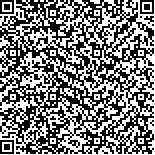| Quote
: |
熊韬,喻嵘,吴勇军.全国名中医王行宽治疗消渴(糖尿病)的数据挖掘[J].湖南中医药大学学报英文版,2021,41(5):720-724.[Click to copy
] |
|
| |
|
|
| This paper
:Browser 1987times Download 730times |
| 全国名中医王行宽治疗消渴(糖尿病)的数据挖掘 |
| 熊韬,喻嵘,吴勇军 |
| (湖南中医药大学, 湖南 长沙 410208) |
| 摘要: |
| 目的 通过数据挖掘技术探讨全国名中医王行宽辨治消渴(糖尿病)的临床经验。方法 在门诊收集2019年7月至2020年1月王教授治疗糖尿病的病历,规范其中的中医学术语后建立Excel数据库,运用IBM SPSS Statistics 23.0软件对糖尿病的临床症状、病位、病性以及治法、方药进行描述性统计,运用Weka 3.8,采用Apriori算法对病机-治法、药-症以及中药之间进行关联规则分析。结果 糖尿病“多饮、多食、多尿”的症状不明显,口干口渴、四肢麻木、头晕头痛等症状出现频次位居前3。病位主要为肾、肝、心,病性主要为热、阴虚、精亏,治法以清热润燥、补肾益精、益肾平肝为主,常用中药有麦冬、天冬、西洋参、熟地黄、山药、山茱萸、茯苓、黄芪、柴胡、黄芩等。发现的关联规则有:(1)病机-治法。肾、精亏与补肾益精相关,肝、肾、阴虚、燥、热与益肾平肝相关等;(2)临床症状-药物。神疲乏力与黄芪相关,口干口渴与西洋参相关等;(3)药物-药物。天冬常与麦冬联用,西洋参常与黄芪联用,柴胡常与黄芩联用等。结论 王行宽教授认为糖尿病以肾精亏虚为本,心肝郁热移于肺胃为标,治疗上主张补肾益精、滋阴润燥和清肝泻心。 |
| 关键词: 消渴 糖尿病 数据挖掘 肾精亏虚 心肝郁热移于肺胃 王行宽 |
| DOI:10.3969/j.issn.1674-070X.2021.05.012 |
| Received:May 30, 2020 |
| 基金项目:国家重点研发计划项目(2018YFC1704400,2018YFC1704300);国家自然科学基金项目(81573956);湖南省教育厅科学研究项目(18A220)。 |
|
| Data Mining of the Treatment of Consumptive Thirst (Diabetes) by Famous Chinese Doctor Wang Xingkuan |
| XIONG Tao,YU Rong,WU Yongjun |
| (Hunan University of Chinese Medicine, Changsha, Hunan 410208, China) |
| Abstract: |
| Objective To explore the famous Chinese doctor Wang Xingkuan's clinical experience on treatment of consumptive thirst (diabetes) by data mining. Methods Wang's medical records of treating diabetes from July 2019 to January 2020 in outpatient department were collected, traditional Chinese medicine terminology was standardized and Excel database was established. The clinical symptoms, disease location, nature, treatment and medicine of diabetes were descriptive statistics analyzed by using IBM SPSS Statistics 23.0. The association rules among pathogenesis-treatment, drug-disease and traditional Chinese medicine were analyzed by Apriori algorithm in the Weka 3.8 software. Results The clinical symptoms of diabetes "polydipsia, polyphagia and polyuria" were not obvious, dry mouth, thirst, numbness of hands and feet, dizziness and headache and other symptoms appear in the top 3. The main disease location was kidney, liver, heart. The main disease nature was heat, Yin deficiency, essence deficiency. The main treatment methods were clearing away heat and moistening dryness, tonifying kidney and essence, tonifying kidney and smoothing liver. The high frequency traditional Chinese medicine was Maidong (Ophiopogonis Radix), Tiandong (Asparagi Radix), Xiyangshen (Panacis Quinquefolii Radix), Shudihuang (Rehmanniae Radix Praeparata), Shanyao (Dioscoreae Rhizoma), Shanzhuyu (Cornifructus), Fuling (Poria), Huangqi (Astragali Radix), Chaihu (Bupleuri Radix), Huangqin (Scutellariae Radix) etc. The correlation rules were (1) pathogenesis-treatment rules:kidney and essence deficiency are related to tonifying kidney and enriching essence. liver, kidney and Yin deficiency, dryness and heat are related to tonifying kidney and flattening liver etc. (2) clinical symptoms-drug rules:mental fatigue is related to Huangqi (Astragali Radix), and thirst is related to Xiyangshen (Panacis Quinquefolii Radix) etc. (3) drug-drug rules:Tiandong (Asparagi Radix)-Maidong (Ophiopogonis Radix), Xiyangshen (Panacis Quinquefolii Radix)-Huangqi (Astragali Radix), Chaihu (Bupleuri Radix)-Huangqin (Scutellariae Radix), etc. Conclusion Professor Wang Xingkuan believes diabetes is based on deficiency of kidney essence, heart and liver heat moving to lung and stomach as the treetop. The treatment is mainly based on tonifying kidney and essence, nourishing Yin and moistening dryness and clearing liver and purging heart. |
| Key words: consumptive thirst diabetes data mining deficiency of kidney essence heart and liver heat moving to lung and stomach Wang Xingkuan |
|

二维码(扫一下试试看!) |
|
|
|
|


